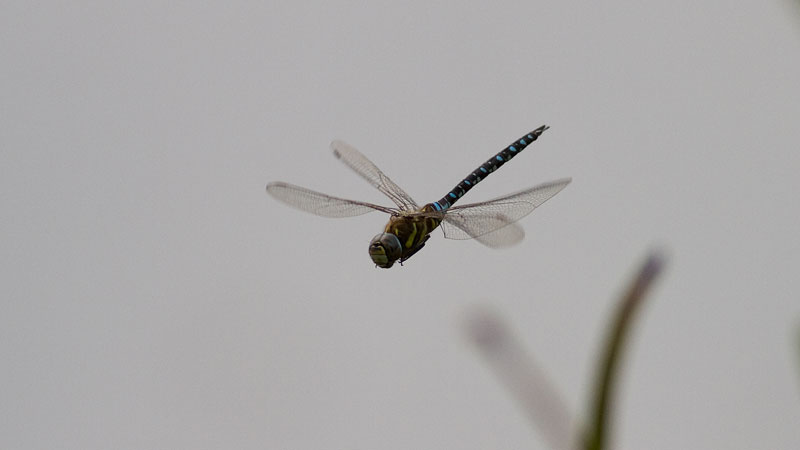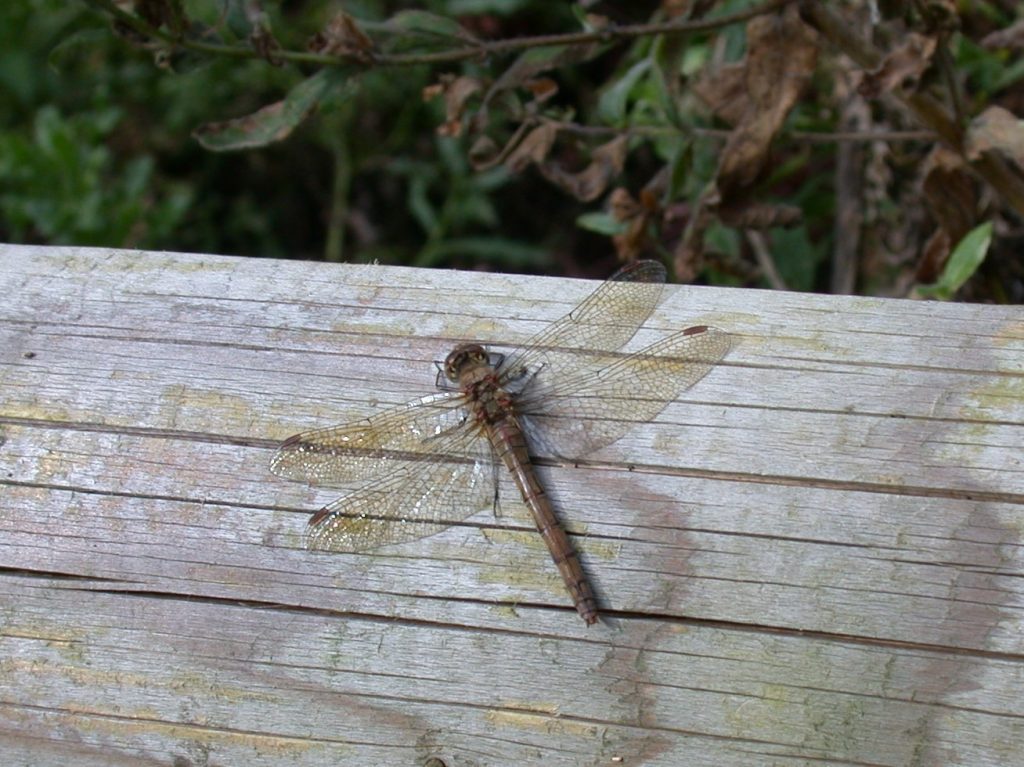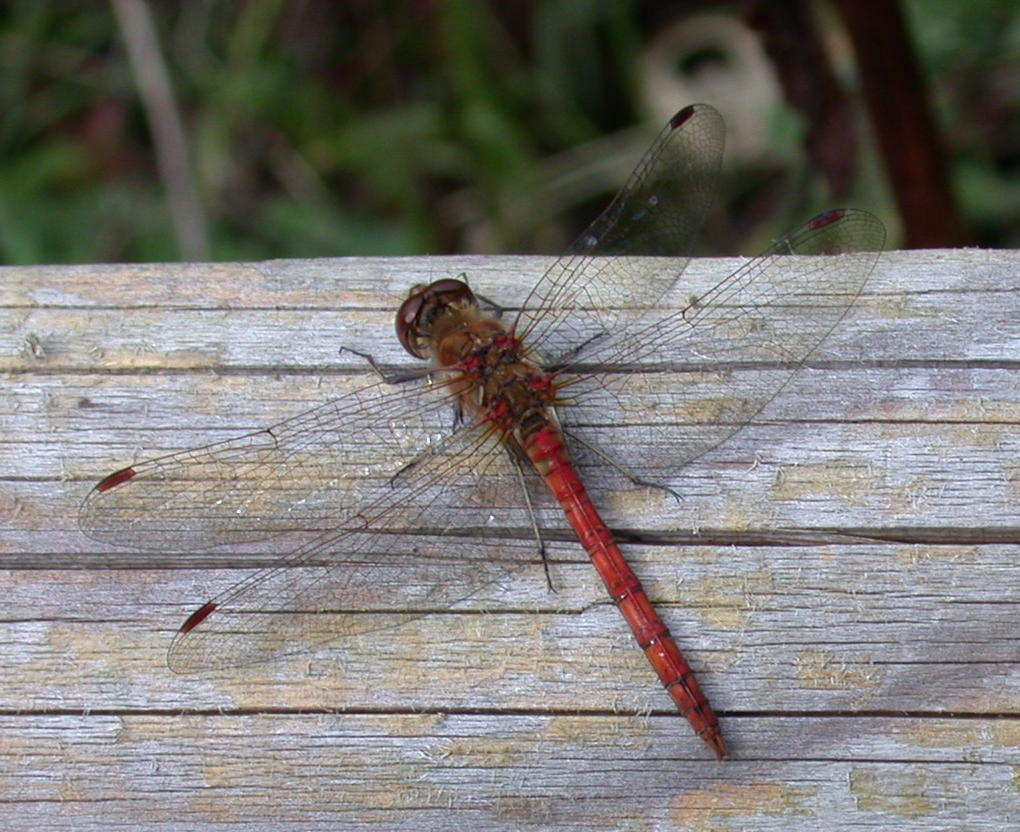Nature Notes – Dragonflies
At some stage in September and early October there is usually a spell of calm weather with decent day-time temperatures.
Three of our dragonfly species seem to enjoy this and can at times be easy to identify and photograph.
Although water bodies are the best places to look for them, they wander quite widely and can often be found in parks and gardens.
Brown Hawker
Brown Hawkers have been on the wing throughout August but they can still be numerous in September.
They are quite large dragonflies, they are fast moving and it is quite a challenge to find one at rest in order to obtain a photograph.
However, flight identification is relatively easy. The name comes from the wing colour.
All dragonflies have translucent wings (you can see light through them) but in the Brown Hawker the wings are like brown stained glass and enable you to identify the insect even at a considerable distance.
If you do get close enough to see the body, the males in particular have a rich, purple brown abdomen with bright blue markings.
As the second part of the name reveals, the Brown Hawker catches and eats other insects, patrolling up and down a favourite ‘beat’, snatching smaller insects in flight.
See also:
Migrant Hawker
Although slightly smaller than the Brown Hawker this dragonfly also feeds by patrolling and snatching prey in flight as it goes along.
Previously thought to be a migrant from Europe in the autumn (hence the name) this species began to colonise the UK, initially in the south east, in the middle of last century.

It is now a common breed in Leicestershire.
However numbers fluctuate each year as the breeding population is still augmented by its migratory habits as a species. Males have a blue head, a brownish thorax and a brown and blue ‘hooped’ abdomen. Females are green, brown and yellow, the green and yellow, replacing especially the blue parts of the male.
Common Darter
Darters are easier to photograph than Hawkers.
Their hunting technique involves sitting around looking out for prey items and ‘darting’ after anything suitable that passes by.
The later in the year, the more likely you are to find them sitting in the sun. As cold-blooded creatures they need the sun’s warmth all the more as average daytime temperatures decline.
Favourite basking places include paths and wooden structures such as fences and benches that radiate heat. At times they can be very numerous.

Female 
Male
Males are red bodied and females are basically yellow or orange. However, insects that have been on the wing for some time gradually turn grey (some of us know that feeling).
David Scott






 Paper House
Paper House

